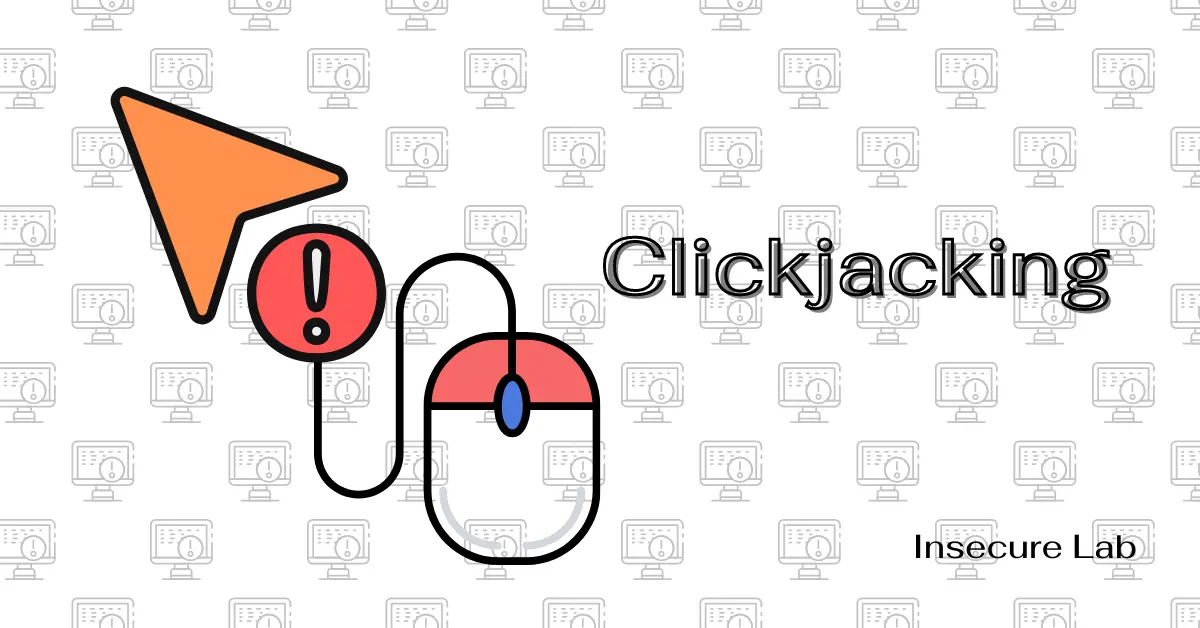🔍 Search
📥 Subscribe
Clickjacking Attack

Table of Contents
In this guide, we will learn in detail what clickjacking is, its purpose, examples, attack mechanisms, and strategies to prevent it in cyber security.
What is Clickjacking?
Clickjacking, also known as a UI redress attack, is a malicious technique used by attackers to trick users into clicking something different than they expected, compromising their security or privacy.
Basically, it's a technique for hijacking clicks, hence the name "clickjacking".
The Objective
The goal of clickjacking is to trick users into unwittingly performing actions that benefit the attacker. These actions can vary depending on the attacker's objectives and the specific context of the attack. Some common objectives include:
- Redirecting the user to malicious websites or phishing pages.
- Stealing sensitive information, such as login credentials or personal data.
- Manipulating social media interactions, such as liking posts or sharing content.
- Initiating downloads of malware or unwanted software.
- Making unintended purchases or transactions on e-commerce platforms.
- Force users to click on ads without their knowledge, generating revenue for the attacker.
Attack Mechanism
The attack typically utilizes HTML iframes to overlay invisible layers containing malicious buttons, links, or forms on top of legitimate-looking content. When users click on the seemingly innocent content, they unknowingly activate the hidden element underneath, leading to harmful consequences.
Techniques Used
Attackers often use various methods to achieve this deception:
1. Invisible Layers
A transparent layer, often an iframe, overlays a legitimate website. You see the visible content but click on the invisible element underneath, triggering the attacker's action.
2. Misleading Design
Buttons or links are disguised as innocent elements like play buttons, social media icons, or even text. You click what appears harmless, but it activates the hidden action.
3. Social Engineering
Luring users to click on disguised elements through deceptive tactics like fake pop-ups or urgency messages.
Example of Clickjacking
Imagine browsing a news website when a captivating "play video" button pops up. You click it, expecting the video, but instead, you unknowingly download malware or share sensitive information without realizing it. That's clickjacking in action.
Clickjacking Protection
Preventing clickjacking attacks requires a combination of user awareness and implementation of security measures. Here are some preventive measures that can help protect against click jacking:
1. Frame Busting Scripts
Implement frame-busting scripts in web pages to prevent them from being framed within an attacker's page. These scripts can detect if a page is being framed and break out of the frame to ensure it is only displayed in its intended context.
2. X-Frame-Options Header
This HTTP header specifies how the browser should handle the website within iframes. Setting it to "DENY" prevents other sites from embedding your content in an iframe.
3. Content Security Policy (CSP)
Content Security Policy is a security mechanism that allows website owners to define the sources from which their web page can load content. By specifying trusted sources for scripts, stylesheets, and other content, CSP helps mitigate the risk of clickjacking attacks by restricting the loading of malicious content.
4. CAPTCHA Challenges
Integrate CAPTCHA challenges into critical user interactions to verify human presence and protect web applications against automated attacks.
5. Security Plugins or Browser Extensions
Install reputable security plugins or browser extensions that can detect and block clickjacking attempts. These tools provide an additional layer of defense by actively monitoring and preventing click jacking attacks.
